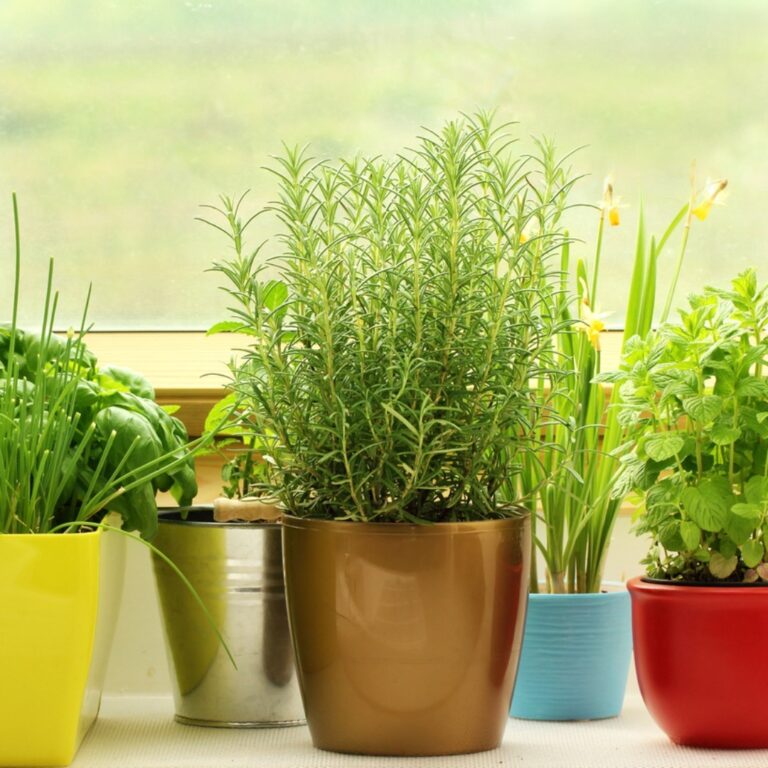How to Grow Chili Peppers Indoors: A Beginner’s Guide
Have you ever wanted to enjoy fresh, spicy chili peppers year-round without needing a garden? Growing chili peppers indoors might be the perfect project for you!
These colorful, fiery veggies are an amazing addition to many dishes, from sauces to stir-fries. And the best part? Growing them indoors is easier than you might think.
I want to share my experience growing chili peppers at home, step by step, so you can do it too.
Why Grow Chili Peppers Indoors?
Chili peppers have always been a favorite of mine. Their vibrant colors and fiery flavor can transform a simple dish into something special.
But buying them at the store often left me disappointed — sometimes they weren’t fresh, or I couldn’t find the right variety. Growing chili peppers indoors gave me a constant supply of exactly what I wanted, and it added a splash of green (and red!) to my kitchen.
Plus, chili peppers are surprisingly easy to grow indoors, even if you’re just starting out with gardening. You get to control the environment, making sure your plant is happy and thriving. Whether you love adding heat to your meals or simply want a new indoor gardening project, chili peppers are a great choice.
Step 1: Picking the Right Pot and Soil
The first step in my indoor chili pepper journey was choosing the right pot and soil. Chili peppers have deep roots, so I chose a pot that was at least 10-12 inches deep, with good drainage holes to prevent water from sitting around the roots. I learned early on that chili peppers really dislike wet feet!
For the soil, I used a well-draining potting mix enriched with compost to give my chili peppers the nutrients they needed.
Chili peppers love loose, rich soil that lets their roots grow freely. An organic potting mix worked wonders for me, and I highly recommend it if you want healthy plants that produce lots of peppers.
| Requirement | Details |
|---|---|
| Pot Depth | At least 10-12 inches |
| Drainage | Essential to prevent root rot |
| Soil Type | Well-draining, enriched with compost |
| Recommended Soil | Organic potting mix |
Step 2: Planting the Seeds
I decided to start with seeds because I wanted to experience the whole growing process from beginning to end. I sowed the seeds about ¼ to ½ inch deep, spacing them a couple of inches apart in the pot. Covering them lightly with soil, I gave them a gentle watering.
To help the seeds germinate, I kept the soil moist but not soggy and placed the pot in a warm spot. You can also cover the pot with clear plastic wrap to create a greenhouse effect, which helps keep the moisture in and speeds up germination. Just make sure to remove it as soon as you see the first sprouts.
| Planting Step | Details |
|---|---|
| Seed Depth | ¼ to ½ inch deep |
| Spacing | A couple of inches apart |
| Germination Aid | Clear plastic wrap to retain moisture (remove after sprouting) |
Step 3: Providing Plenty of Light
Chili peppers love sunlight. I placed my pot near a south-facing window where it could get at least 6-8 hours of direct sunlight a day. If you don’t have a sunny spot in your home, you can use a grow light to supplement the light.
I ended up using an LED grow light for extra coverage, especially during the winter months when natural light was scarce.
If you use a grow light, make sure to keep it about 6-12 inches above the plants and keep it on for 14-16 hours a day. Chili peppers need a lot of light to produce fruit, so this step is key to having a healthy plant that gives you plenty of peppers.
Step 4: Watering Correctly
Watering chili peppers is all about balance. I made sure to keep the soil consistently moist but not overly wet. Overwatering can lead to root rot, which is a common problem for indoor plants. I checked the top inch of soil every few days, and if it felt dry, I watered.
One thing I learned is to water the soil directly and avoid getting the leaves wet, as this can sometimes lead to fungal issues. Always let any excess water drain away so that the roots aren’t sitting in water.
| Watering Tip | Details |
|---|---|
| Soil Moisture | Keep consistently moist but not waterlogged |
| Watering Method | Water at soil level, avoid wetting leaves |
| Drainage | Allow excess water to drain to prevent root rot |
Step 5: Maintaining Temperature and Humidity
Chili peppers love warmth, so I tried to keep the temperature between 70-85°F during the day. I also made sure my plants weren’t near any drafts or air conditioning vents, which could chill them. Chili peppers can handle cooler nighttime temperatures, but I always kept them away from cold windows during winter.
Humidity is another important factor. Chili peppers like moderate humidity, so if my home felt particularly dry, I’d use a small humidifier or place a tray of water near the plants to increase the moisture in the air.
Step 6: Supporting and Pruning for Healthy Growth
As my chili pepper plants started to grow taller, they needed a little support. I added small stakes to help hold up the stems, especially as the peppers began to form. The plants can get top-heavy, so staking them early prevents any breakage.
Pruning was also essential. When my plants reached about 8-10 inches tall, I pinched off the growing tips to encourage bushier growth. This helped my chili plants develop stronger branches, which led to more peppers in the long run. I also removed some of the early flowers to help the plant focus on growing strong before producing fruit.
Fertilizing for Maximum Yield
Chili peppers are heavy feeders, so I used a balanced, water-soluble fertilizer every 2-3 weeks, diluted to half the recommended strength. I found that too much fertilizer led to lots of leaves but not many peppers, so using a moderate amount was key.
I also tried organic options like fish emulsion and compost tea, which worked well to provide gentle, consistent nutrients without overwhelming the plant.
| Fertilizing Tips | Details |
|---|---|
| Frequency | Every 2-3 weeks |
| Fertilizer Type | Balanced, water-soluble (diluted to half strength) |
| Organic Option | Fish emulsion or compost tea |
Common Challenges and How to Overcome Them
One of the challenges I faced was getting my chili pepper plants to set fruit. Since there are no bees or wind indoors, I had to hand-pollinate the flowers using a small paintbrush. Gently brushing the inside of each flower helped transfer pollen, and soon I saw small peppers starting to form.
Another issue was pests. Although indoor plants typically have fewer pests, I did encounter aphids once. I simply wiped them off with a damp cloth and sprayed the plant with a mix of water and a few drops of dish soap to keep them away. Neem oil is also a great option if pests become persistent.
Enjoying the Harvest
After a few months of care, my chili pepper plants were covered in beautiful, vibrant peppers. There is nothing quite like the satisfaction of picking a pepper from your own plant and using it in your cooking.
I love adding fresh chili peppers to my sauces, stir-fries, and even homemade hot sauce. The flavor of homegrown peppers is so much more intense and vibrant compared to store-bought ones.
Growing chili peppers indoors has added a bit of spice to my cooking and a lot of joy to my home. It’s been amazing to see these plants thrive and produce fruit, all from the comfort of my kitchen.
Final Thoughts: Why You Should Grow Chili Peppers Indoors
If you’re thinking about growing your own vegetables, chili peppers are an excellent choice.
They’re not too demanding, and the reward is well worth the effort. From adding a bit of greenery to your space to having fresh, spicy peppers whenever you need them, growing chili peppers indoors is a fun and fulfilling project.
Plus, like other indoor plants, chili peppers help improve air quality and add a vibrant touch to your home. Give it a try, and soon you’ll have your own supply of fresh, spicy peppers right at your fingertips. Happy gardening!








